Enzymes(酶)
Enzymes are very efficient and specific catalyst proteins which react with 1 or few types of substrates in biochemical reactions and are responsible for bringing about almost all of the chemical reactions in living organisms. Enzymes speed up reactions by providing an alternative reaction pathway of lower activation energy. Without enzymes, reactions take place at a rate far too slow for the pace of metabolism which means that they speed up the chemical reactions in living things.
There are 2 types of enzymes, ones that help join specific molecules together to form new molecules & others that help break specific molecules apart into separate molecules. Enzymes play many important roles ouside the cell as well. One of the best examples of this is the digestive system. For instance, it is enzymes in your digestive system that break food down in your digestive system break food down into small molecules that can be absorbed by the body. Some enzymes in your digestive system break down starch, some proteins and others break down fats. The enzymes used to digest our food are extra-cellular since they are located outside our cells & enzymes inside our cells are intra-cellular enzymes. Enzymes are used in ALL chemical reactions in living things; this includes respiration, photosynthesis, movement growth, getting rid of toxic chemicals in the liver and so on. Enzymes are proteins that must have the correct structure to be active. They are very easily affected by heat, pH and heavy metal ions.
Ribonucleoprotein enzyme catalytic activity is located in the protein part but for some the catalytic activity is in the RNA part. A catalyst is any substance which makes a chemical reaction go faster, without itself being changed. A catalyst can be used over and over again in a chemical reaction and does not get used up.
Enzymes lower the amount of activation energy needed by binding to the reactants of the reaction they catalyze, thus speed up the reaction and can process millions of molecules per second. Enzymes are typically large proteins with high molecular weight that permit reactions to go at conditions that the body can tolerate.
Enzyme nomenclature is based on what the enzyme reacts with & how it reacts along with the ending ase.
Enzymes must get over the activation energy hurdle.
Enzymes change how a reaction will proceed which reduces the activation energy and makes it faster. The more we increase the enzyme concentration the faster the reaction rate for non-catalyzed reactions. Enzymes that are catalyzed reactions also increase reaction rate at higher level of concentration but up to a certain point called Vmax which means that the enzyme has reached its maximum point. The reaction is limited by both the concentrations of the enzyme and substrate. Enzymes as catalysts take part in reactions which provide an alternative reaction pathway. Enzymes do not undergo permanent changes and remain unchanged at the end of the reaction. They only change the rate of reaction, not the position of the equilibrium.Enzymes as catalysts are highly selective by only catalysing specific reactions due to the shapes of the enzyme’s molecule.
Enzymes contain a globular protein part called apoenzyme and a non-protein part named cofactor or prosthetic group or metal-ion-activator. Changes in temperature and pH have great influence on the intra- and intermolecular bonds that hold the protein part in their secondary and tertiary structures.
Examples of cofactors are 1. Prosthetic group that are permanently bound to the enzyme. 2. Activator group which are cations (positively charged metal ions) & temporarily bind to the active site of the enzyme. 3.Coenzymes, usually vitamins or made from vitamins which are not permanently bound to the enzyme molecule, but combine with the enzyme-substrate complex temporarily. Enzymes require the presence cofactors before their catalytic activity can be exerted. This entire active complex is referred to as the holoenzyme.
Without enzymes, our guts would take weeks to digest our food, our muscles, nerves and bones would not work properly and so on…
Main Enzyme category groups:
Oxidoreductases:
All enzymes that catalyse oxido-reductions belong in this class. The substrate oxidized is regarded as a hydrogen or electron donor. The classification is based on 'donor:acceptor oxidoreductase'. The common name is 'dehydrogenase', wherever this is possible; as an alternative, 'acceptor reductase' can be used. 'Oxidase' is used only where O2 is an acceptor. Classification is difficult in some cases, because of the lack of specificity towards the acceptor.
Transferases:
Transferases are enzymes that transfer a group, for example, the methyl group or a glycosyl group, from one compound (generally regarded as donor) to another compound (generally regarded as acceptor). The classification is based on the scheme 'donor:acceptor grouptransferase'. The common names are normally formed as 'acceptor grouptransferase' or 'donor grouptransferase'. In many cases, the donor is a cofactor (coenzyme) that carries the group to be transferred. The aminotransferases constitute a special case.
Hydrolases:
These enzymes catalyse the hydrolysis of various bonds. Some of these enzymes pose problems because they have a very wide specificity, and it is not easy to decide if two preparations described by different authors are the same, or if they should be listed under different entries. While the systematic name always includes 'hydrolase', the common name is, in most cases, formed by the name of the substrate with the suffix -ase. It is understood that the name of the substrate with this suffix, and no other indicator, means a hydrolytic enzyme. It should be noted that peptidases have recommended names rather than common names.
Lyases:
Lyases are enzymes that cleave C-C, C-O, C-N and other bonds by means other than by hydrolysis or oxidation. They differ from other enzymes in that two (or more) substrates are involved in one reaction direction, but there is one compound fewer in the other direction. When acting on the single substrate, a molecule is eliminated and this generates either a new double bond or a new ring. The systematic name is formed according to 'substrate group-lyase'. In common names, expressions like decarboxylase, aldolase, etc. are used. 'Dehydratase' is used for those enzymes that eliminate water. In cases where the reverse reaction is the more important, or the only one to be demonstrated, 'synthase' may be used in the name.
Ligases:
Ligases are enzymes that catalyse the joining of two molecules with concomitant hydrolysis of the diphosphate bond in ATP or a similar triphosphate. 'Ligase' is often used for the common name, but, in a few cases, 'synthase' or 'carboxylase' is used. 'Synthetase' may be used in place of 'synthase' for enzymes in this class.
Products for Enzymes
- 41701(11)
- Activating Transcription Factor(3)
- Adenylate Kinase(10)
- AHCY(3)
- Aldolase(9)
- Asparaginase(5)
- Aurora Kinase(18)
- Beta Lactamase(3)
- Calcium and Integrin Binding(2)
- Calcium/Calmodulin-Dependent Protein Kinase(4)
- Carbonic Anhydrase(49)
- Casein Kinase(36)
- Cathepsin(52)
- Chitinase(5)
- Creatin Kinases(9)
- Cyclin(7)
- Cyclin-Dependent Kinase(18)
- Cyclophilin(23)
- Deaminase(14)
- Decarboxylase(12)
- Dehydrogenase(96)
- Discoidin Domain Receptor Tyrosine Kinase(2)
- DNA Polymerase(4)
- EGF Receptor(3)
- Endonuclease(6)
- Enolase(10)
- Enterokinase(5)
- Epimerase(3)
- Esterase(15)
- FGF Receptors(12)
- FK506 Binding Protein(10)
- Fructosamine 3 Kinase(2)
- Galactosidase(5)
- Glucosidase(32)
- Gluteradoxin(7)
- Glycogen synthase kinase(2)
- Glycosylase(10)
- Glyoxalase(3)
- Granzyme(7)
- Guanylate Kinase(2)
- Heparanase(2)
- Histone Deacetylase(3)
- Hydratase(10)
- Hydrolase(33)
- Hydroxylase(6)
- Isomerase(26)
- Jun N-terminal Kinase(1)
- Jun Proto-Oncogene(2)
- Kallikrein(26)
- Ligase(4)
- Lipase(14)
- Lipocalin(6)
- Lyase(9)
- LYVE1(3)
- Mitogen-Activated Protein Kinase(16)
- MMP(68)
- Mutase(11)
- Natural Enzymes(4)
- Nuclease(18)
- Nucleotidase(4)
- Nudix Type Motif(11)
- Other Enzymes(63)
- Oxidase(23)
- Oxygenase(12)
- Paraoxonase(3)
- Peptidase(41)
- Peroxiredoxin(10)
- Phosphatase(150)
- Phosphorylase(9)
- PI3-kinase(5)
- Polymerase(13)
- PPARG(2)
- Protease(15)
- Proteasome(54)
- Protein Kinase Akt1/PKB alpha(4)
- Protein Kinase-A(7)
- Protein Kinase-C(3)
- Protein Kinases(86)
- Protein Tyrosine Phosphatase(10)
- Reductase(60)
- Secreted Phospholipase A2(10)
- Serine Threonine Kinase(4)
- Sulfatase(8)
- Synthase(23)
- Synthetase(33)
- TGFBR(3)
- TGM2(3)
- TIMP(10)
- TPA(4)
- Transferase(156)
- Tyrosine Kinase(9)
- Ubiquitin Conjugating Enzyme(39)
- Uromodulin(4)
- VEGF Receptors(14)
- Transaminase(19)
- Hexokinase(6)
- TIE1(6)
- Cat.No. 产品名称 Information
-
GC65097
ARL67156 trisodium hydrate
FPL 67156 trisodium hydrate
ARL67156 (FPL 67156) trisodium hydrate 是一种 ecto-ATPase 抑制剂。ARL67156 trisodium hydrate 是竞争性 NTPDase1 (CD39),NTPDase3 和 NPP1 抑制剂,Ki 分别为 11,18 和 12 μM。ARL67156 trisodium hydrate 可用于钙化性主动脉瓣疾病、哮喘等疾病的研究。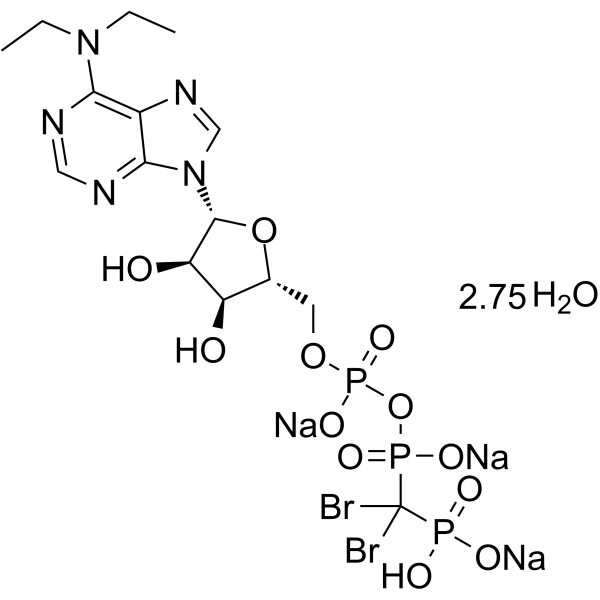
-
GC60600
ARL67156 trisodium salt hydrate
ARL67156trisodiumsalthydrate是一种ecto-ATPase抑制剂。ARL67156trisodiumsalthydrate是弱的竞争性NTPDase1(CD39),NTPDase3和NPP1抑制剂,Ki分别为11,18和12μM。ARL67156trisodiumsalthydrate可预防体内主动脉瓣钙化。
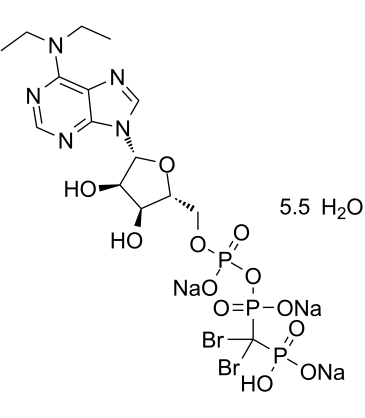
-
GP21410
ARSA Human
Arylsulfatase A Human Recombinant

-
GP21411
ARSA Human, SF9
Arylsulfatase A Human Recombinant, Sf9

-
GP21412
ARSA Mouse
Arylsulfatase A Mouse Recombinant

-
GP21413
ARSA Mouse, Active
Arylsulfatase A Mouse Recombinant, Active

-
GP21414
ARSG Human
Arylsulfatase G Human Recombinant

-
GP21415
ART4 Human
ADP-Ribosyltransferase 4 Human Recombinant

-
GP21416
AS3MT Human
Arsenic Methyltransferase Human Recombinant

-
GP21417
ASL Human
Argininosuccinate Lyase Human Recombinant

-
GP21418
ASMT Human
Acetylserotonin O-Methyltransferase Human Recombinant

-
GP21420
AsnRS
Asparagine tRNA Synthetase Brugia Malayi Recombinant

-
GP21419
ASNS Mouse
Asparagine Synthetase Mouse Recombinant

-
GP21421
ASPA Human
Aspartoacylase Human Recombinant

-
GC46885
Asperglaucide
金色酰胺醇酯,Asperglaucide
An amide with diverse biological activities
-
GC40769
Asperphenamate
Anabellamide, Auranamide, NSC 306231
A fungal secondary metabolite
-
GP21422
ASPH Human
Aspartate Beta-Hydroxylase Human Recombinant

-
GP21423
ASPRV1 Human
Aspartic Peptidase, Retroviral-Like 1 Human Recombinant

-
GP21424
ASRGL1 Human
ASRGL1 Human Recombinant

-
GP21425
ASS1 Human
Argininosuccinate Synthase 1 Human Recombinant

-
GP22421
ATF1 Human
Activating Transcription Factor-1 Human Recombinant

-
GP22422
ATF3 Human
Activating Transcription Factor-3 Human Recombinant

-
GP22423
ATF4 Human
Activating Transcription Factor-4 Human Recombinant

-
GP21426
ATP5D Human
ATP Synthase Subunit D, Mitochondrial Human Recombinant

-
GP21427
ATP5O Human
ATP Synthase Subunit O, Mitochondrial Human Recombinant

-
GP21428
AUH Human
AU RNA Binding Protein/Enoyl-CoA Hydratase Human Recombinant

-
GP22424
AURKA Human
Aurora Kinase A Human Recombinant

-
GP22425
AURKB Human
Aurora Kinase B Human Recombinant

-
GC72964
Aurkin A
Aurkin A是极光A激酶(Aurora A Kinase,也称Aurka)与TPX2相互作用的变抗抑制剂,通过靶向TPX2结合位点,Kd为3.77 μM。
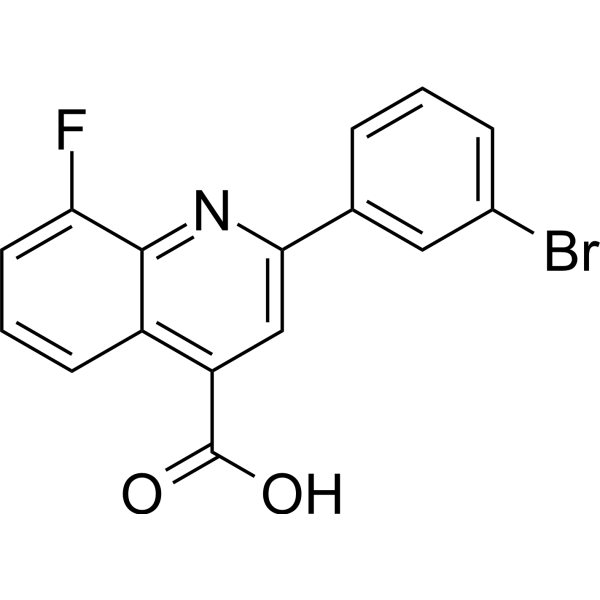
-
GC40667
Aurora Kinase Inhibitor II
4-(4-Benzamidoanilino)-6,7-dimethoxyquinazoline
Blocks Aurora A kinase activity
-
GC67899
Aurora kinase inhibitor-8
Aurora kinase inhibitor-8 是一种高选择性 Aurora 激酶的抑制剂。

-
GC73375
Aurora Kinases-IN-3
Aurora Kinases-IN-3(化合物15a)是一种口服活性AURKB抑制剂,通过破坏AURKB的有丝分裂定位来引发AURKB抑制活性。

-
GC46093
Azadirachtin B
印楝素 B
An azadirachtin with diverse biological activities
-
GP21430
B3GAT3 Human
Beta-1,3-Glucuronyltransferase 3 Human Recombinant

-
GP21431
B3GNT2 Human
Beta-1,3-N-Acetylglucosaminyltransferase 2 Human Recombinant

-
GP26127
BACE1 Human
BACE1 Human produced in Sf9 Baculovirus cells is a single, glycosylated polypeptide chain containing 442 amino acids (22-457 a

-
GP21432
BAT1 Human
HLA-B Associated Transcript 1 Human Recombinant

-
GC72901
BC-23
NSC 45382
BC-23 (NSC 45382)是蛋白酶体抑制剂。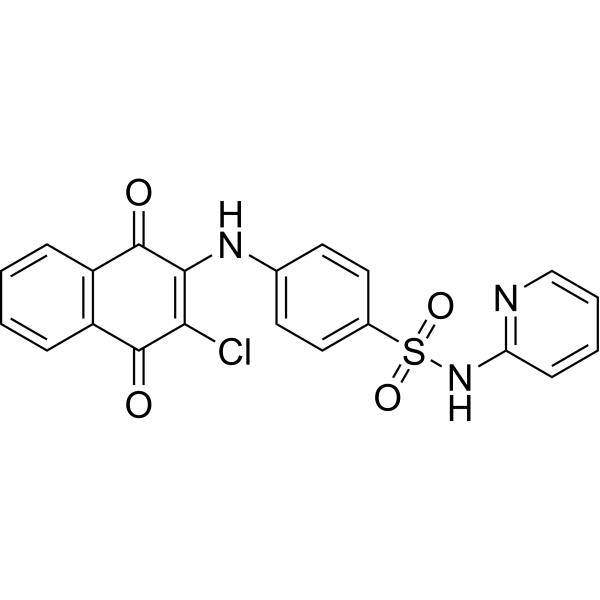
-
GP21433
BCAT1 Human
Branched Chain Amino-Acid Transaminase 1 Human Recombinant

-
GP21434
BCAT2 Human
Branched Chain Amino-Acid Transaminase 2 Human Recombinant

-
GC65025
BCI hydrochloride
(E)-BCI hydrochloride
An inhibitor of DUSP6 and DUSP1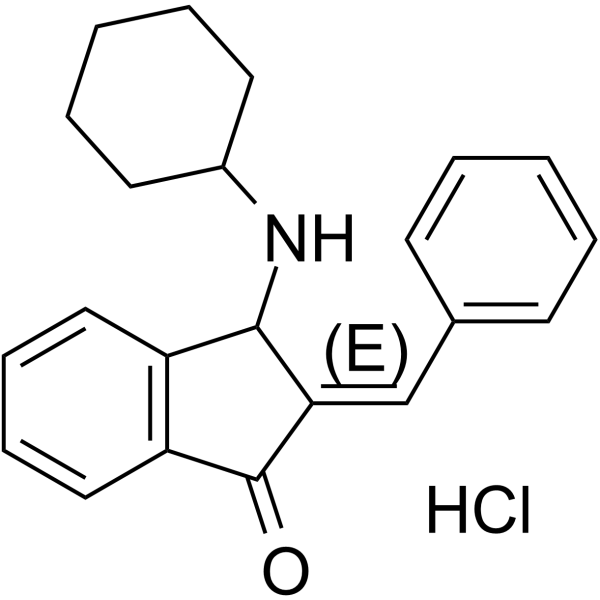
-
GP21435
BCKDHA Human
Branched Chain keto Acid Dehydrogenase E1 Alpha Human Recombinant

-
GP21436
BCOADC-E2 Human
2-Oxo-Acid Dehydrogenase Complex E2 Human Recombinant

-
GP21437
BDH1 Human
3-Hydroxybutyrate Dehydrogenase, Type 1 Human Recombinant

-
GP21438
BDH2 Human
3-Hydroxybutyrate Dehydrogenase, Type 2 Human Recombinant

-
GC64734
Benzenesulphonamide
Benzenesulfonamide (Benzenesulphonamide, Benzosulfonamide, Phenyl sulfonamide, Benzene sulfonamide) ia an inhibitor of carbonic anhydrases.
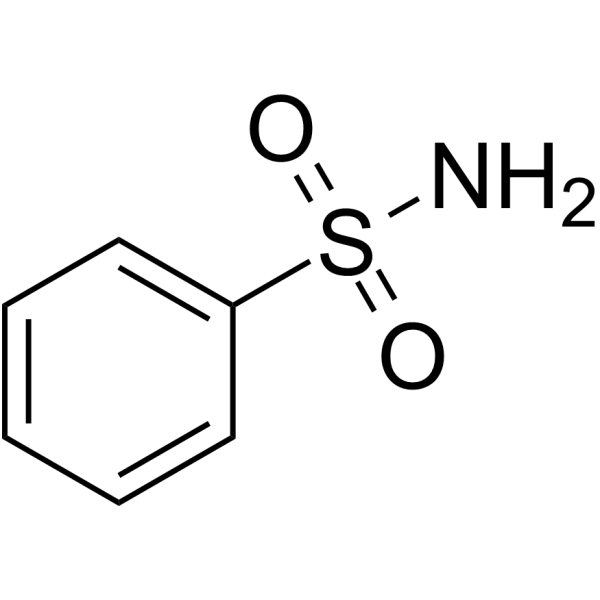
-
GC62864
Benzolamide
CL11366
Benzolamide (CL11366) 是一种有效的碳酸酐酶 (CA) 抑制剂,抑制hCA I,hCA II,EcoCAγ 和 VchCAγ 的 Ki 值分别为15 nM,9 nM,94 nM 和 78 nM。Benzolamide 还抑制 CAS3,Ki 值为 54 nM。Benzolamide 可用于青光眼和癫痫的研究。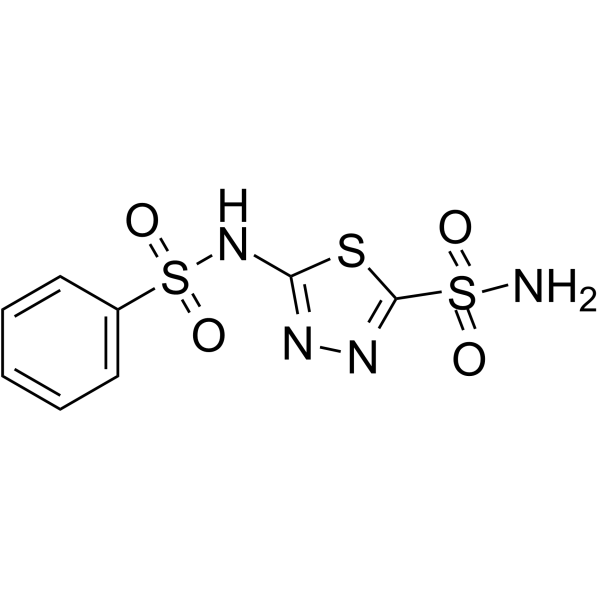
-
GP26129
Benzonase Nuclease, 90%
Benzonase Nuclease Serratia Marcescens Recombinant produced in E

-
GP26128
Benzonase Nuclease, 99%
Benzonase Nuclease Serratia Marcescens Recombinant produced in E

-
GP21440
BHMT Human
Betaine Homocysteine S-Methyltransferase Human Recombinant





